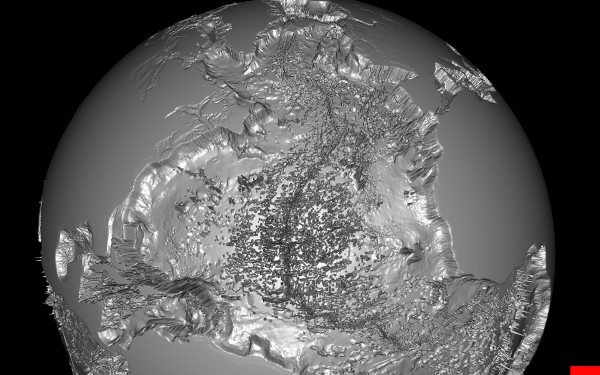We are currently involved in an NSF-funded project to study the changes in global ocean flow patterns in response to past climate change, specifically the difference in flow patterns between the last glacial maximum (otherwise known as the “Ice Age”, ~25000 years ago) and the Holocene (otherwise known as “today”).
In layman’s terms, the basic idea is to use differences in the chemical composition, particularly the abundance of isotopes of carbon (13C) and oxygen (18O), of benthic core samples collected from the ocean floor all around the world to establish correlations between sampling sites, and from that derive a global flow model that best explains these correlations. (By the way, 13C is not the carbon isotope used in radiocarbon dating; that honor goes to 14C).
This is a multi-institution collaborative project. The core sample isotope ratios are collected and collated by Lorraine Lisiecki and her graduate students at UC Santa Barbara, and the mathematical method to reconstruct flow patterns based on those samples is developed by Jake Gebbie at Woods Hole Oceanographic Institution. Howard Spero at UC Davis is the overall principal investigator of the project, and UC Davis’ contribution is visualization and analysis software, building on the strengths of the KeckCAVES project. I’ve posted previously about our efforts to construct low-cost immersive display systems at our collaborators’ sites so that they can use the visualization software developed by us in its native habitat, and also collaborate with us and each other remotely in real-time using Vrui’s collaboration infrastructure.
So here is the first major piece of visualization software developed specifically for this project. It was developed by Rolf Westerteiger, a visiting PhD student from Germany, based on the Vrui VR toolkit. Here is Rolf himself, using his application in the CAVE:
This application reads a database of core sample compositions created by Lorraine Lisiecki, and a reconstructed 3D flow field created by Jake Gebbie, and puts both into a global three-dimensional context. The software shows a block model of the Earth’s global ocean floor (at the same resolution as the 3D flow field, and vertically exaggerated by a significant factor), and allows a user to interactively query and explore the 3D flow.
The primary flow visualization method is line integral convolution (LIC), which creates dense and intuitive visualizations of complex flows. As LIC works best when applied to 2D surfaces instead of 3D volumes, Rolf’s application is based on a set of interactively controllable surfaces (one sphere of constant depth, two cones of constant latitude, two semicircles of constant longitude) which slice through the implicitly-defined 3D LIC volume. To indicate flow direction, the LIC texture is animated by cycling through a phase offset, and color-coded by either flow velocity or water temperature.
The special thing about this LIC visualization is that the LIC textures are not pre-computed, but generated in real time using the GPU and a set of GLSL shaders. This allows for even more interactive exploration than shown in this first result; a user could specify arbitrary slicing surfaces using tracked 3D input devices, and see the LIC pattern displayed on those surfaces immediately. From our experience with the 3D Visualizer software, which is based on very similar principles, we believe that this will lead to a very powerful exploratory tool.
A secondary flow visualization method are tracer particles, which can be injected into the global ocean at arbitrary positions using a tracked 3D input device, and leave behind a trail of their past positions. Together, these two methods provide rich insight into the structure of these reconstructed flows, and especially their evolution over geologic time.
A third visualization method is used to put the raw data that were used to create the flow models into context. A set of labels, one for each core sample in the database, and each showing the relative abundance of the important isotope ratios, are mapped onto the virtual globe at their proper positions to enable visual inspection of the flow reconstruction method.
Unfortunately, Rolf had to return to Germany before we were able to film a video showing off all features of his visualization application, so I had to make a video with myself standing in for him:
The next development steps are to replace the ocean floor block model read from the flow file with a high-resolution bathymetry model (see below), and to integrate the visualization application with Vrui’s remote collaboration infrastructure such that it can be used by all collaborators for virtual joint data exploration sessions.



